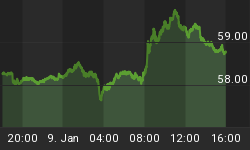The gap between the two most important oil benchmarks has widened recently, a symptom of the shifting oil supply/demand dynamics between the U.S. and the rest of the world.
For the past few years, Brent and WTI have traded very closely together, as both benchmarks reflect the crushing weight of oversupply. Prior to the market downturn in 2014, the spread between the two benchmarks was dictated much more by geopolitical whims. Brent, which reflects market conditions in Europe, the Middle East, Africa and parts of Asia – in essence a more internationally-oriented marker – rose and fell more sharply on geopolitical events. WTI, on the other hand, closely tracked U.S. conditions.
The dynamics were most visible during the Arab Spring back in 2011, when oil prices around the world spiked. The oil market was already tight, and fears of supply outages – and not just fears, but real outages, especially in Libya – pushed prices over $100 per barrel. But Brent was particularly affected, while WTI increased more modestly. The result was a blowout in the spread – Brent temporarily traded at a premium of nearly $30 per barrel over WTI.
But another reason was that the U.S. had a crude oil export ban in place at that time, right up through the end of 2015. Surging shale production was trapped within the U.S., which put downward pressure on WTI. Meanwhile, if global supply conditions tightened, Brent would feel the pinch much more than WTI.
After the oil price crash in 2014, the differences narrowed. The removal of the crude export ban in the U.S. at the end of 2015 also erased some of the differences in market conditions. The two benchmarks have closely tracked one another since then.
More recently, however, the difference has opened up again, although to be sure, not like pre-2014 levels. Brent is now trading at a more than $4 per barrel premium to WTI, which, save for some exceptions, is the highest gap in two years.
There are a couple of reasons for the wider spread. First, and arguably the most important, is the cuts from OPEC, which has reduced supply in Europe, the Middle East and Asia. Second, U.S. shale is coming back, which is putting downward pressure on WTI.
But there are a few more reasons why the difference has become more pronounced recently. The stockpile of crude in the North Sea is abating. Also, hedge funds have stepped up bullish bets on Brent relative to WTI, which could be exacerbating the spread.
At the same time, the IEA has estimated that global oil demand is set to grow by about 1.5 million barrels per day this year, but demand is coming almost entirely from developing countries, which would influence the Brent marker much more than WTI.
Another reason is that OPEC is cutting production this month – the cartel is on track to lower output by more than 400,000 bpd in August compared to July, according to PetroLogistics. Saudi Arabia said a few months ago that August would be the month when it started to cut exports.
(Click to enlarge)
(Click to enlarge)
Related: The Next Oil Price Spike May Cripple The Industry
Ultimately, however, we are unlikely to ever return to the extremely wide differential between the two markers that was seen several years ago. Crude exports from the U.S. continue to rise, topping 1 million barrels per day at times earlier this summer. If the spread between Brent and WTI grows large enough, oil will flow out of the U.S. to take advantage of that arbitrage. That would push up WTI and drag down Brent, essentially forcing the two markers to converge on each other. In that sense, the differential can’t get too big, and won’t stay open for too long. The lifting of the crude export ban in the U.S. ensures this is the case.
But for now, the larger-than-usual spread as of late is a sign that supply is rising in the U.S. while market conditions are tightening elsewhere.
By Nick Cunningham, Oilprice.com
More Top Reads From Oilprice.com:

















